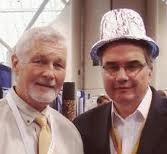Distracts from Supply & Demand Data, $1900 Forecast by July.
DOLLAR gold prices were little changed in London on Thursday morning, holding above $1682 per ounce as world stock markets, commodities and bonds were little changed.
Silver also held in its tight 2-day range, trading just shy of $31.50 per ounce.
Priced in Euros, the gold price edged 0.5% lower as the single currency rose.
“Amazingly,” says Thursday’s note from the commodity team at Commerzbank in Frankfurt, “the German Bundesbank’s [statement on] the future storage of its gold reserves attracted more attention yesterday than the latest data from Thomson Reuters GFMS – the research institute, which specializes in analysing precious metals.”
“Criminal masterminds and Hollywood scriptwriters have been put on notice,” says the Financial Times today, calling Germany’s 7-year plan to move 674 tonnes of gold from New York and Paris to Frankfurt “one of the biggest publicly announced shipments of the precious metal on record.”
But “given that this is not a question of buying or selling, it has no direct impact on the gold price,” notes Commerzbank.
Full-year 2012 gold data from Thomson Reuters GFMS yesterday estimated gold demand from all central banks, as a group, at a half-century high of 536 tonnes, up 17% from 2011.
The Swiss National Bank today said it expects to report a full-year 2012 profit of US$6.4 billion thanks to a rise in both the gold price and the Euro – which the SNB printed Swiss Francs to buy in a bid to depress its own currency in 2011.
Gold demand from Chinese jewelry manufacturers meantime showed the first drop in 9 years, according to GFMS, while household demand in India – the world’s #1 consumers – also fell.
Global gold mining supply hit a new annual record, albeit only 0.2% higher from 2011 and barely 8% above the level of 2001.
Since then, the gold price has risen by more than 515%.
“Although there is now growing speculation around the structure and longevity of the US Federal Reserve’s QE programme, policies of ultra-low interest rates across the Western economies will persist in 2013,” said Philip Klapwijk, global head of the consultancy, and one of London’s top 10 gold price forecasters eight times in the last decade.
“This will continue to support investor interest in gold in the absence of low risk investments that can offer acceptable yields,” Klapwijk believes, forecasting a rise in the gold price to $1900 per ounce by July, with investment demand surging by one fifth.
“The run-up to the debt ceiling crisis-point at the end of February,” agrees Credit Suisse analyst Tom Kendall, quoted by Reuters today, “is going to be supportive of gold.
“Talks of downgrades from the major rating agencies will be part of it. This focuses people’s attention on the longer-term stability of the US debt [and] the longer-term value of the US Dollar.
“[That] benefits gold.”
Pegging “resistance” in gold at $1694 short term, “Wednesday marked the 8th consecutive day of higher lows” for gold, notes the latest technical analysis from Scotia Mocatta.
“Gold in particular has been lifted by a stronger Euro this morning,” says Standard Bank in London.
“Physical gold demand is also strong, as it has been since last Friday. While Chinese buying has been relatively subdued, buying interest from South East Asia and India has more than taken up the slack.”
As earnings season got underway on the stock market, shares in London-listed gold miner Petropavlovsk Plc today gained 5% after it reported a 13% rise in full-year output.
African Barrick Gold – whose shares dropped by more than a fifth the day it said takeover talks with a Chinese-state owned gold miner had failed this month – ticked lower again after it reported a drop in full-year output.
Other corporate news saw Rio Tinto’s CEO Tom Albanese stood down as the mining giant booked $14 billion of write-downs from what analysts have called its “disastrous” takeover of aluminum business Alcan.
Goldman Sachs said its quarterly profit tripled to a 3-year record of $2.8 billion after it cut bankers’ pay by 11%, aided by job cuts.
Rival investment-bank J.P.Morgan netted $2.2bn in the last 3 months of 2012, but CEO Jamie Dimon saw his bonus halved to $10m after letting the “London Whale” run up trading losses of $6bn.
Adrian Ash
BullionVault
Adrian Ash is head of research at BullionVault, the secure, low-cost gold and silver market for private investors online, where you can buy gold and silver in Zurich, Switzerland for just 0.5% commission.
(c) BullionVault 2013
Please Note: This article is to inform your thinking, not lead it. Only you can decide the best place for your money, and any decision you make will put your money at risk. Information or data included here may have already been overtaken by events – and must be verified elsewhere – should you choose to act on it.





















